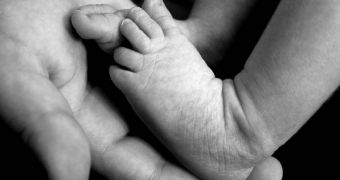It would appear that children conceived through in-vitro fertilization (IVF) have a higher chance of developing more medical conditions during the first months of life than those conceived naturally, a newly published research shows. The experts behind the investigation show that the trend is especially valid for twins, who are at higher risks of becoming sick than normal twins. Statistically speaking, IVF children were admitted in neonatal care units during their first three years of life more often. Freezing the embryos before implantation also proved to reduce the incidence of diseases shortly after birth, the same paper shows.
Quoting the study, the BBC News reports that, at this point, more than 25 percent of IVF children are born after embryos are frozen, and that the trend is on the rise. Out of the 21 controlled investigations that were part of the new research, the experts concluded that children born from frozen embryos were less likely to have a better birth weight than those born from unfrozen ones, and also less likely to be born ahead of term. Conversely, in the case of twins born after assisted reproductive therapy (ART), the risk of low weight and premature birth was very elevated, and the children very likely to end up in neonatal care units.
“It is reassuring news about the embryo freezing. But the issue of IVF twins is concerning which is why we are trying to move towards single embryo transfer in as many women as possible to give these children the best start in life,” Sheffield University fertility expert Dr. Allan Pacey, who is also the secretary of the British Fertility Society, said. The new study was the result of a collaboration between researchers in the United Kingdom and Australia. A paper detailing the finds was published in the latest issue of the scientific journal Human Reproduction.
“Clinicians have a duty of care to ensure that patients fully understand what IVF treatment involves and what the risks are, for both themselves and their babies. This study is another piece of the jigsaw that women and their doctors need to consider before treatment. We know that multiple pregnancy and birth pose the biggest single risk to mothers and babies following fertility treatment. That is why, over the past year, professional and patient organizations, together with the HFEA, have been driving forward a national strategy to reduce the number of multiple births following IVF,” a Human Fertilization and Embryology Authority spokesperson concluded.

 14 DAY TRIAL //
14 DAY TRIAL //